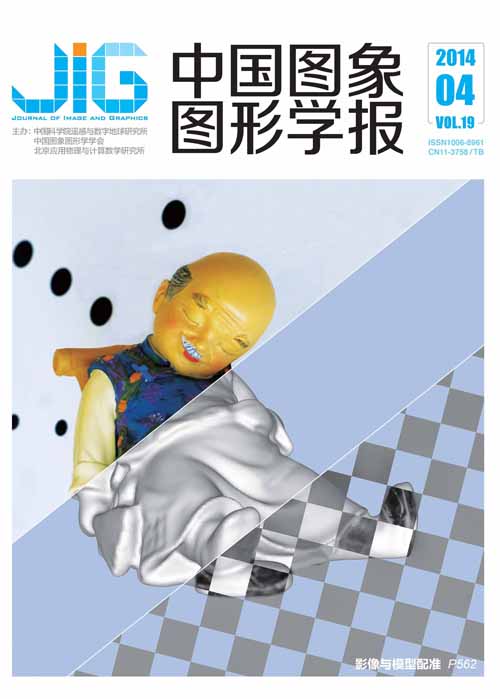
融合颜色属性和空间信息的显著性物体检测
摘 要
目的 提出了一种基于颜色属性和空间信息的显著性物体检测算法,并将其用于交通标志的检测。方法 首先,训练颜色属性得到颜色-像素值分布,据此将图像划分为不同的颜色聚簇,每个聚簇的显著性取决于其空间紧致性。其次,将每个聚簇分割为多个区域,用颜色属性描述子表示每个区域,计算区域的全局对比度。最后,同时考虑区域对比度和相应聚簇的空间紧致性,得到最终的显著图。在此基础上,将交通标志的先验知识转换为自上而下的显著性图,形成任务驱动的显著性模型,对交通标志进行检测。结果 在公开数据集上的测试结果表明,该算法取得最高92%的查准率,优于其他流行的显著性算法。在交通标志数据集上的检测取得了90.7%的正确率。结论 提出了一种新的显著性检测算法,同时考虑了区域的颜色和空间信息,在公开数据集上取得了较高的查准率和查全率,在对交通标志的检测中也取得了较好的结果。
关键词
Combining color names with spatial information for salient object detection
Xu Dan1,2, Tang Zhenmin1, Xu Wei1(1.School of Computer Science and Engineering, Nanjing University of Science and Technology, Nanjing 210094, China;2.School of Computer Science and Engineering, Jiangsu University of Science and Technology, Zhenjiang 212003, China) Abstract
Objective Visual saliency refers to the physical,bottom-up distinctness of image details.It is a relative property that depends on the degree to which a pixel or region is visually distinct from its background.The region-based contrast method(RC) achieves good results on public dataset. However,the over-segmentation of the method is considered as a preview contrast computation which contributes to the high precision.In this study,a novel bottom-up salient object detection method based on color names and spatial information is proposed,in which regional contrast and spatial compactness are considered as two factors for saliency evaluation.In addition,we express the prior knowledge of traffic signs with top-down saliency maps,combined with the bottom-up saliency maps,to detect traffic signs from real world images.Method First,we learn color names offline by a probabilistic latent semantic analysis model to find the mapping between color names and pixel values.The color names can be used for image segmentation and region description.Second,pixels are assigned into special color names according to their values to form different color clusters in the image.The saliency measure for every color cluster is evaluated by its intra spatial variance.The less the color cluster spreads the more salient it is.Third,every color cluster is divided into some local regions which are represented by color name descriptors.The regional contrast is evaluated by computing color distance between different regions in entire image.Last,the final saliency map is constructed by incorporating the color cluster's spatial compactness measure and the corresponding regional contrast.Note that in most cases,it is not the bottom-up saliency,but the most "interesting" object in an image that attracts attention.In this study,road signs are divided into three categories; every category has special color information.For each category, a class-specific distribution is constructed by the bag-of-words(BoW)model with training images to form the top-down saliency maps.Then the traffic signs are detected from the saliency maps, which are generated by combining the bottom-up saliency maps with top-down saliency maps.Result When evaluated using one of the largest publicly available datasets,our method outperforms several existing salient object detection methods with an achieved accuracy of 92%.The ROC curve generated by our method is better than the curves produced by other methods with the area under curve(AUC)of 0.9453.In addition,when tested on the traffic sign dataset constructed by ourselves,our method achieves a detection rate of 90.7%.Conclusion In the paper,we propose a novel saliency detection method,in which an image is treated as a composition of 11 basic color names.Every pixel belongs to different color names in a probabilistic manner.Based on this idea,the image is divided into some color clusters,followed by segmenting every cluster into local regions.For saliency measure evaluation,both spatial compactness of the color cluster and the region contrast are considered.Our approach achieves the best results compared with some state-of-the-art methods on the public dataset.Furthermore,it obtains good performance when considering task-dependent application for traffic sign detection.
Keywords
|



 中国图象图形学报 │ 京ICP备05080539号-4 │ 本系统由
中国图象图形学报 │ 京ICP备05080539号-4 │ 本系统由